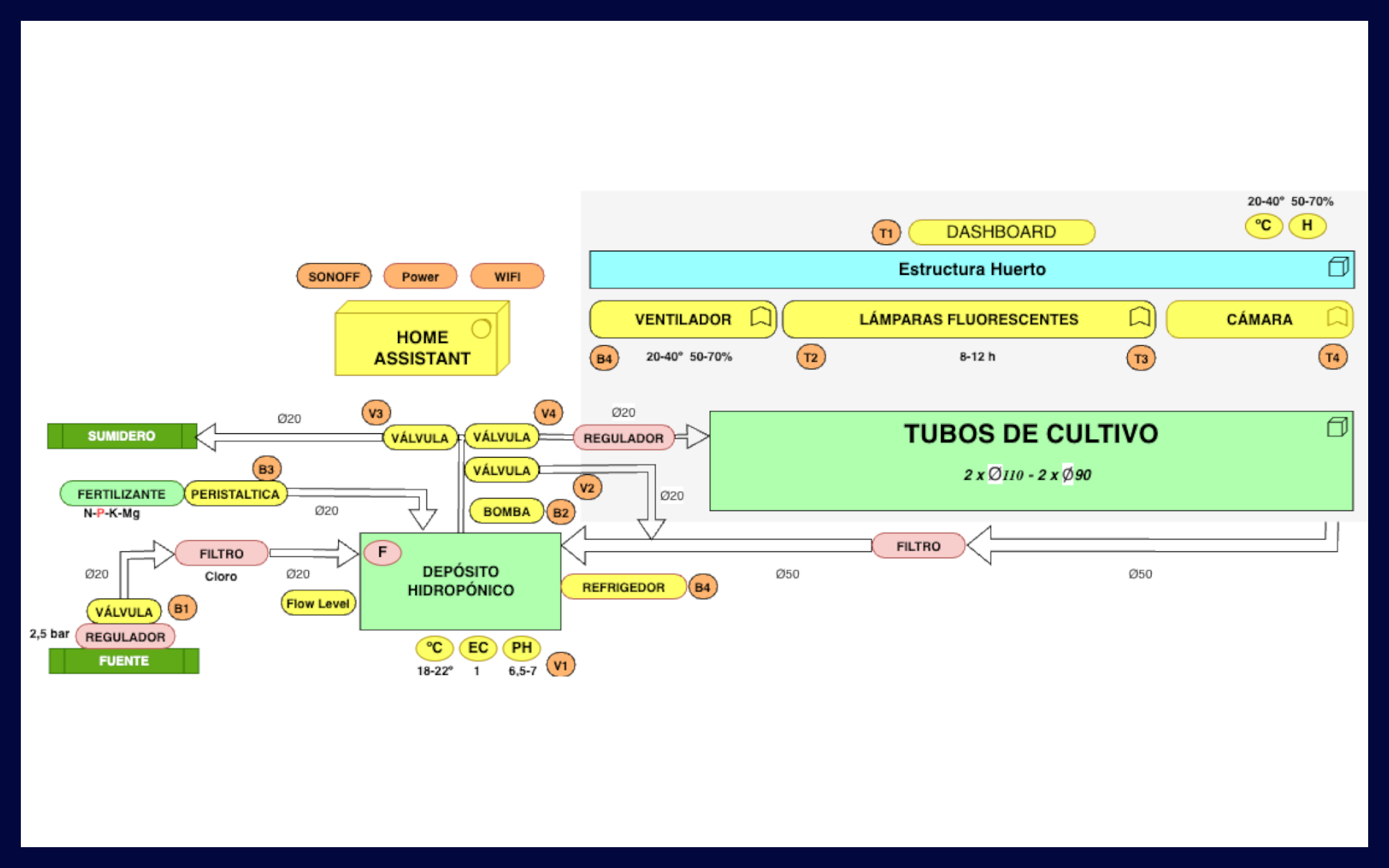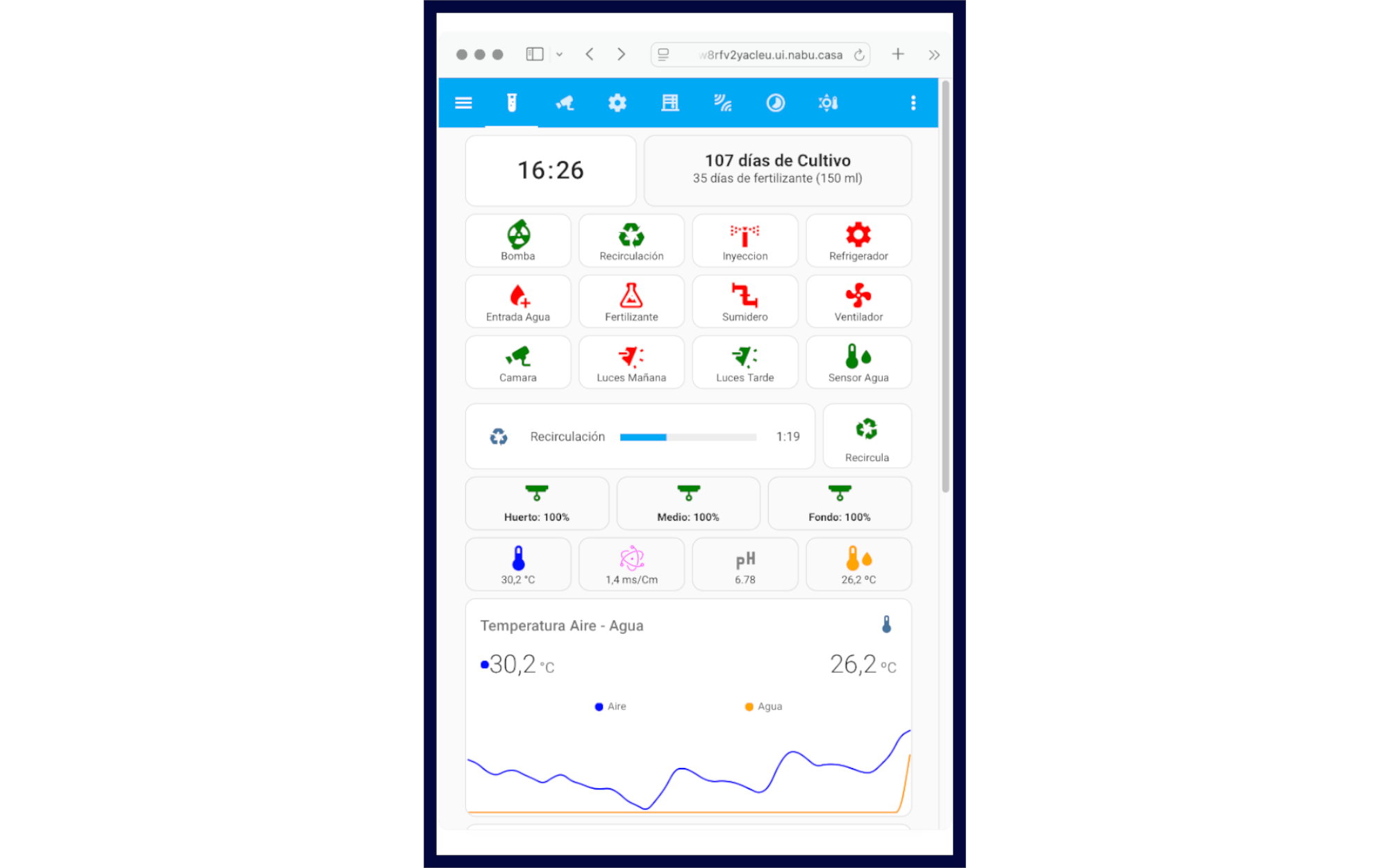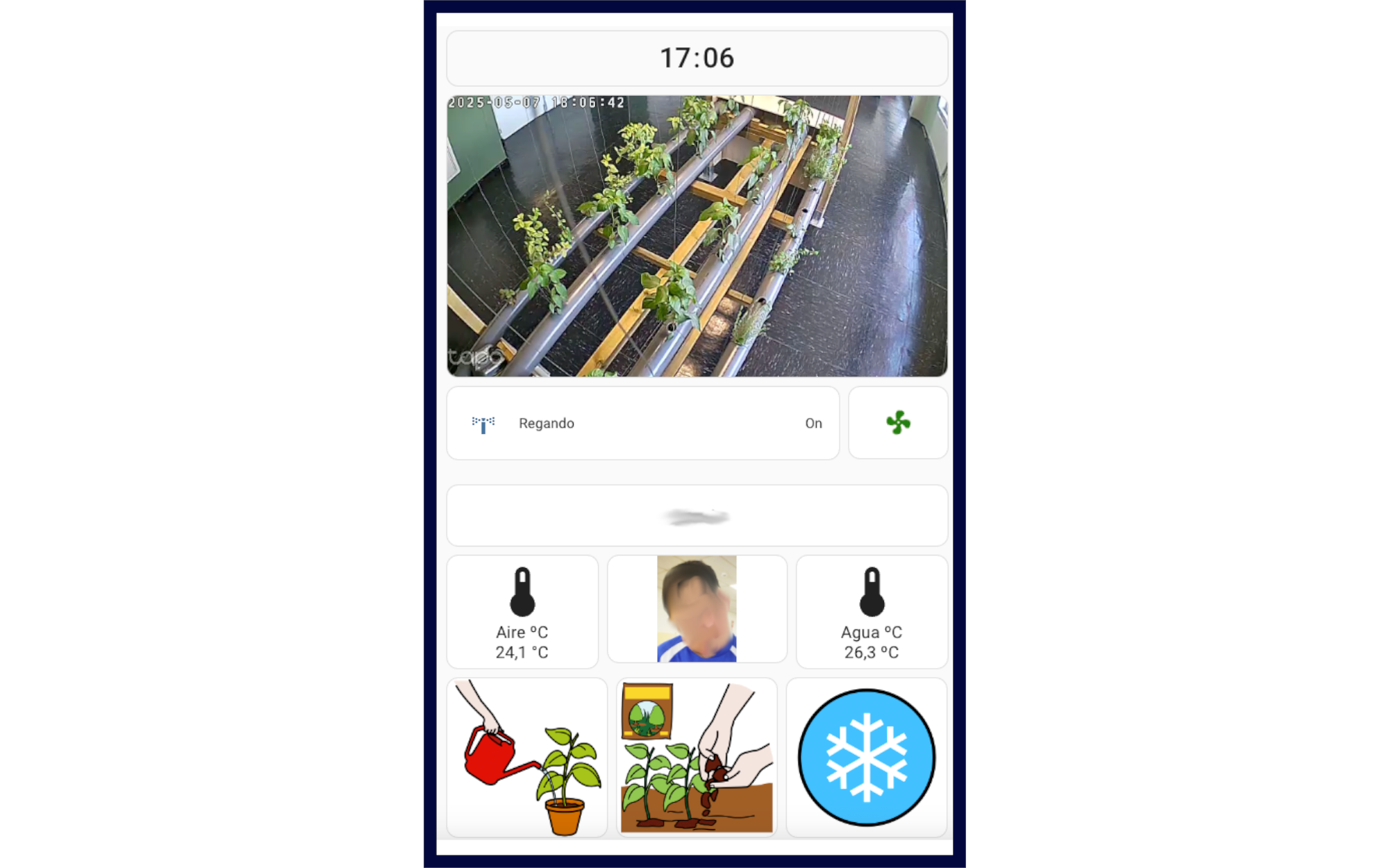HATHOR
Implementation of an accessible hydroponic garden, automated with remote control for people with intellectual disabilities.
General description of the project
The HATHOR (Hydroponic Automated THerapeutic ORchard) consists of the creation of an accessible and semi-automated hydroponic garden designed for people with intellectual disabilities to actively participate in plant care. The garden includes temperature, humidity, and nutrient sensors, as well as actuators that regulate water and fertilizer supply.
Through an accessible tablet interface, users can easily and intuitively modify these parameters. This activity promotes autonomy, self-esteem, and a sense of responsibility, while providing a rich sensory experience and a direct connection with nature.
To ensure accessibility, the control interface was configured according to users’ needs, integrating clear iconography, pictograms, and easy-to-read options to facilitate understanding and interaction.



Technical breakdown of the project
The HATHOR Project was designed with a modular approach, allowing the integration of sensing technologies, home automation, and software within an accessible and easily replicable environment.
The hydroponic garden was installed in an indoor space specifically adapted for this purpose. The structure consists of a high-resistance wooden frame supporting perforated PVC tubes for plant cultivation. At the base, there is a nutrient solution tank connected to a pressure pump and a system of solenoid valves that regulate water circulation.
The modular design facilitates maintenance and safety, while the ventilation, climate control, and lighting system, with fluorescent lamps and fans, maintains optimal growing conditions. Additionally, wooden panels protect the components and encourage direct interaction with the plants, reinforcing the therapeutic aspect of the project. The system includes a complete set of sensors and actuators that monitor and regulate both water and environmental conditions. Among the water sensors are: pH, electrical conductivity (EC), oxidation-reduction potential (ORP), and salinity sensors, along with a flow meter to measure water flow and a level sensor to monitor the tank’s volume. Regarding environmental sensors, the system integrates temperature, humidity, atmospheric pressure, and CO₂ sensors, ensuring a stable microclimate. The actuators and control elements include solenoid valves that automatically regulate water flow, fans and extractors for temperature and ventilation control, heat lamps, and motorized blinds to adjust natural lighting. Additionally, several IoT devices from the SONOFF family (DUAL R3, SwitchMan R5W, 4CHR3, Mini R4, and THR316D) enable automation and remote control of all these components via the Home Assistant platform.
These devices are responsible for monitoring and recording parameters such as:
Water conditions: pH, electrical conductivity (EC), redox potential, and salinity.
Flow and level: meters and sensors ensure proper circulation of the nutrient solution.
Environmental conditions: temperature, humidity, pressure, and CO₂ levels.
Auxiliary devices: fans, extractors, heat lamps, and motorized blinds.
A TP-Link C520WS surveillance camera and a Home Assistant OS–based control hub are also integrated.

All management is carried out through the Home Assistant platform, which connects sensors, actuators, and mobile applications.
This layer allows users to:
Automate tasks (irrigation, lighting, ventilation).
Automatically adjust parameters according to environmental conditions.
Store and visualize system historical data.
Send alerts and notifications in case of critical variations.
Maintenance tasks are simple and safe, allowing professionals at the centers to perform them easily:
Cleaning and replacement of filters.
Priming and purging of the pump.
Quarterly calibration of pH and conductivity sensors.
Adjustment of water cooling in the tank.
The system identifies who is using it at all times through personalized profiles with photos, recording sessions and actions to analyze user participation and support therapeutic and research work.
Two versions of the accessible mobile application were developed:
Administrator version: allows full management of parameters, calibrations, and routines, as well as providing remote access and real-time visualization.
User version: designed with cognitive accessibility criteria, it includes pictograms, large buttons, and simple reinforcement messages, allowing basic actions such as watering, activating fans, or checking plant status through a live camera feed.



Team
Dr. Víctor Manuel Carneiro, Computer Engineer, TELEMÁTICA Research Group
Dr. Javier Andrade Garda, Computer Engineer, ISLA Research Group
Paula de Santos Dorrego, Occupational Therapist, TALIONIS Research Group
Raúl Fraiz Gómez, Occupational Therapist
Manuel Lagos Rodríguez, Computer Engineer, TALIONIS Research Group
Jorge Rivadulla Brey, Computer Engineer, TALIONIS Research Group
Iago Fernández Garrido, Computer Engineer, TALIONIS Research Group
Academic production
Santos-Dorrego, P., Rivadulla-Brey, J., Andrade-Garda, J., & Carneiro-Díaz, V. (2025, octubre 9–10). HATHOR – Accessible automation and interaction in a hydroponic garden for people with disabilities. En Actas del Congreso XoveTIC 2025 (A Coruña, España). Universidade da Coruña.


